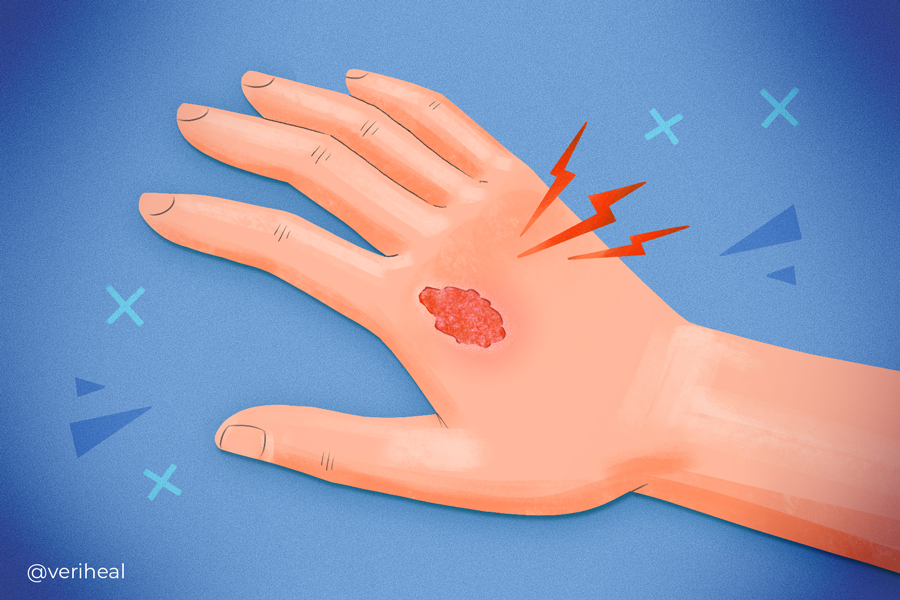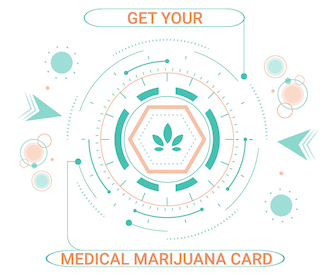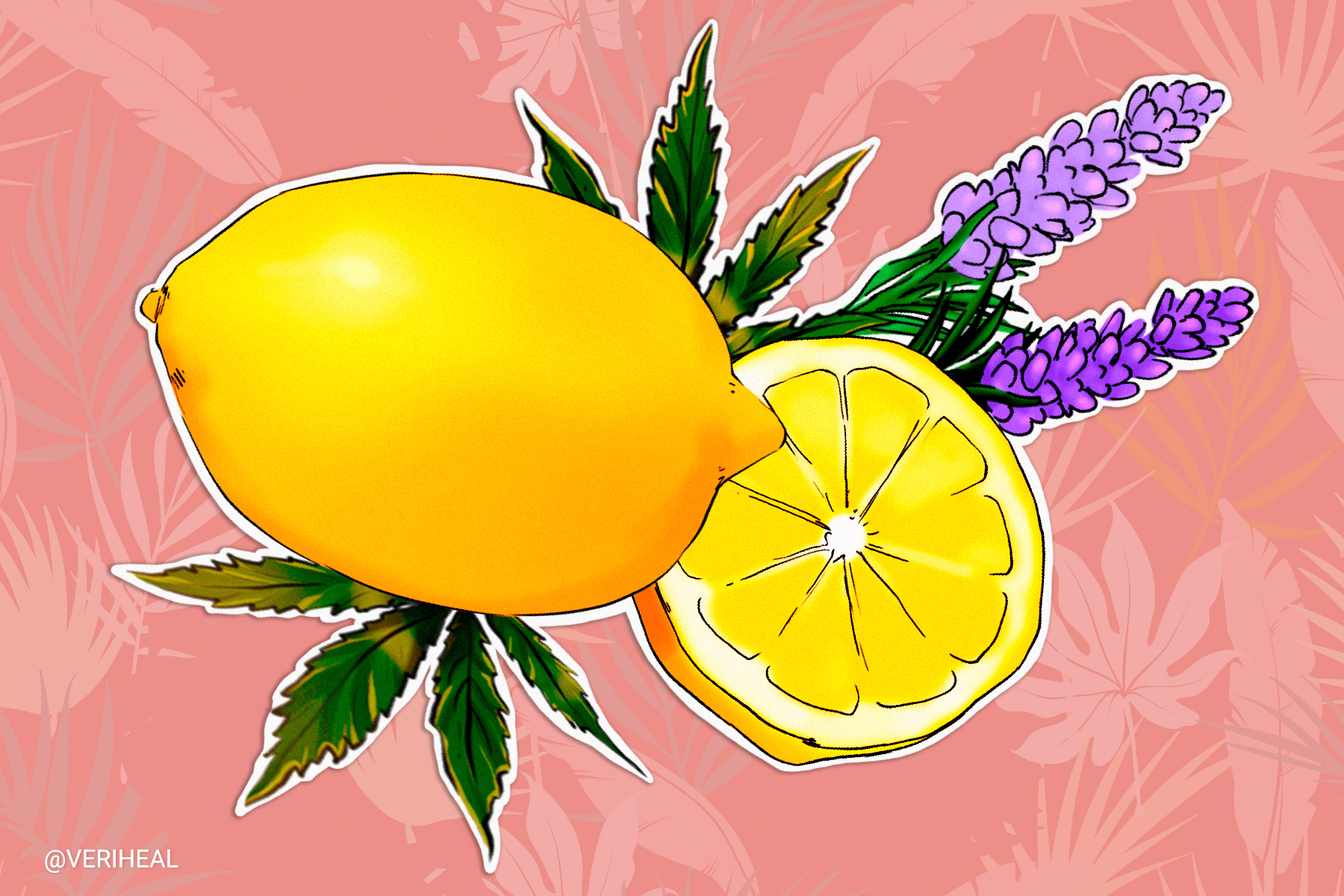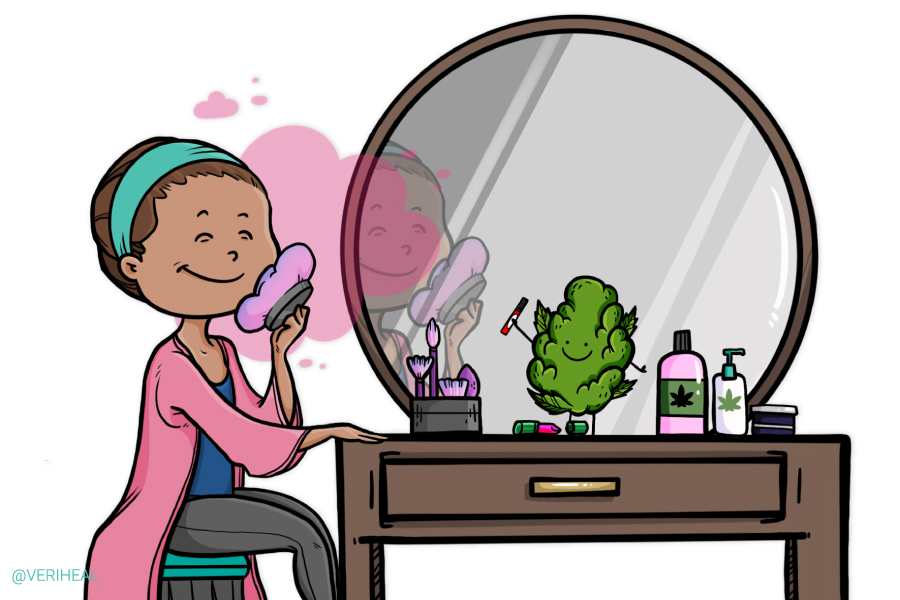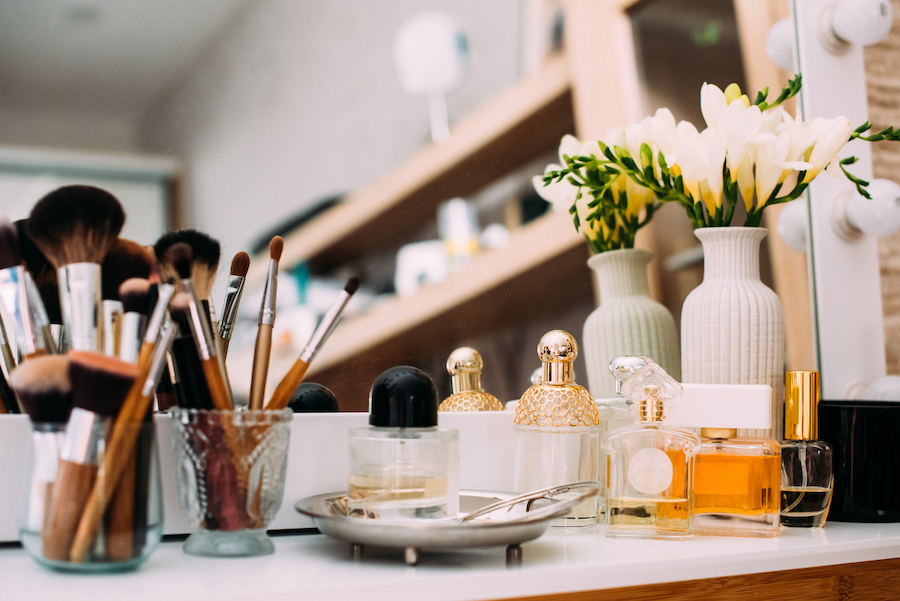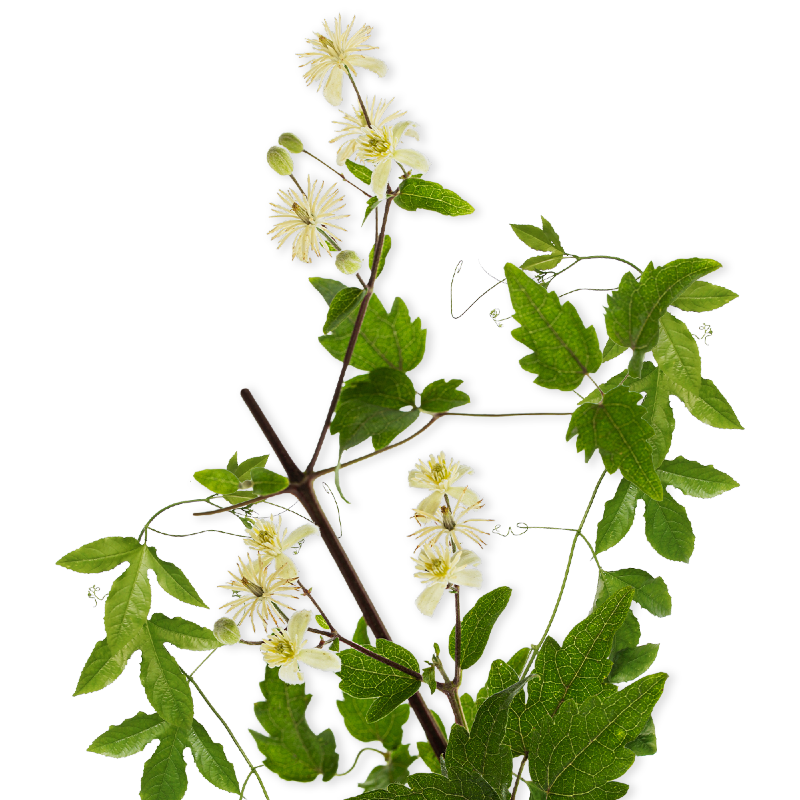Medical Marijuana May Help Heal Skin Ulcers & Skin Wounds
- Can Medical Cannabis Help Heal Wounds?
- CBD & Wound Healing
- Ulcers and Medical Cannabis: Considerations to Keep in Mind
- Research on the Effects of Marijuana and Dermatology
- Types of Skin Ulcers
Sometimes getting a cut or wound on your legs isn’t a big deal, but when it doesn’t heal as expected then you likely have a skin ulcer to contend with. When it comes to skin ulcers, it is always recommended to seek medical advice as there could be other serious underlying health issues that are causing necrosis or death of your skin. Some patients are finding that medical cannabis can help improve their skin symptoms by reducing inflammation, itching, and accelerating wound healing.
Medical cannabis contains 100s of naturally-occurring compounds including cannabinoids. When we ingest or use cannabinoids on our skin, our endocannabinoid system (ECS) kicks in. The ECS of our body consists of fat-based neurotransmitters called endocannabinoids as well as cannabinoid receptors CB1 and CB2. When cannabis and its cannabinoids, including Δ9-tetrahydrocannabinol (THC) and cannabidiol (CBD), contact CB1 and CB2 receptors, interesting things can happen. Cannabinoids can increase or decrease our natural endocannabinoid levels which can play a role in a variety of bodily processes including maintaining proper body temperature, modulating our immune system, and pain relief, as well as how we perceive chronic pain, and nausea.
Typically, CB1 receptors are primarily found in the central nervous system while CB2 receptors are found in various tissues in the body. When it comes to our skin, researchers have found that both CB1 and CB2 receptors are found in plentiful numbers. They can be found in keratinocytes of the top layer of the skin as well as in skin nerve fibers, skin cells, melanocytes that produce skin pigment, hair follicles, and the primary sweat glands (3). This makes the skin a good target to treat with medical cannabis and its cannabinoids. Keratin-producing keratinocytes and skin cells that produce collagen, called fibroblasts, also contain large amounts of endocannabinoids. Anandamide (AEA) and 2-arachidonoylglycerol (2-AG) are found in these cells that are responsible for maintaining our skin’s structure.
Cannabinoids from medical marijuana can also interact with other chemical pathways in our bodies that are not part of the ECS. Transient Receptor Potential (TRP) receptors can be found in a variety of skin cells that are responsible for the formation and maintenance of the skin barrier and skin cell growth as well as modulating the inflammatory process and immune cells of the skin (3). Another type of receptor found in the skin that interacts with cannabinoids is called peroxisome proliferator-activated receptors (PPAR) which are responsible for regulating the expression of our genes in the skin.
Check out our ulcers guide to find more information about how various types of ulcers can be treated with medical marijuana.
Can Medical Cannabis Help Heal Wounds?
Now that you know the basics about how cannabis interacts with the skin, it’s time to find out what kind of role it can play when it comes to skin ulcers and wound management. Wound healing is a complicated process, but it can be broken down into three phases that overlap and include inflammation, proliferation, and maturation or tissue remodeling (3). Researchers believe that the ECS plays a heavy role in this process as CB1 and CB2 receptors interact with immune system cells in the skin and fibroblasts. When the cannabinoid receptors are activated and the endocannabinoid levels change, the immune cells upregulate anti-inflammation efforts and indirectly activate TRP receptors and epidermal growth factor receptors. Slowing down fatty acid amide hydrolase (FAAH), the enzyme that degrades cannabinoids, also helps prolong and promote cannabinoid treatment.
In addition to helping skin regrowth, fibroblasts also play a role in reducing inflammation and pain perception in the skin (5). Not only are they responsible for the transition from acute to chronic inflammation, but it has also been shown that if fibroblasts are impaired, they can impair a wound from properly closing.
A 2017 study tested the effects of CB2 receptors in both fibroblasts and keratinocytes with promising results. This study examined human cell cultures of both keratinocytes and fibroblasts in neonatal skin (5). Researchers found that both CB1 and CB2 receptors were stimulated by JWH015, an anti-inflammatory stimulus, in both keratinocytes and fibroblasts. This resulted in an enhanced healing response to inflammation of the skin cell samples. Though this study didn’t specifically use cannabis to activate CB1 and CB2 receptors, it is strong groundwork for the potential of cannabinoids to help assist with wound healing in humans through the same receptors. This is important because many studies talking about wound healing and cannabinoids have taken place in animals.
Since we know how these cells function within the ECS to repair the skin, we can also see the effects of cannabinoid receptors when it comes to hypertrophic scars. These scars are caused when the skin doesn’t heal properly, leaving the scar thick, itchy, and raised. A 2020 study from Scientific Reports examined 50 female bariatric surgery patients before and after surgery. These patients were separated into groups based on whether they had normal scarring or hypertrophic scarring (8).
Endocannabinoid levels of the scar tissues and blood plasma levels were measured for AEA, 2-AG, palmitoylethanolamide (PEA), and oleoylethanolamide (OEA) as well as blood. Researchers saw no difference in measurements of blood plasma and skin endocannabinoids between the two groups. However, they did find that in the group of patients who had hypertrophic scars, that AEA concentrations were significantly lower than in normal scarring (8). Due to the deficiency of AEA, the researchers of this study believe that dysfunctions of ECS and its endocannabinoids can lead to poor wound repair. This is important because it proves that the ECS is necessary for wound healing and it also means that the skin is a potential pathway for raising endocannabinoid levels for skin healing.
CBD & Wound Healing
Though there are not many qualitative and quantitative clinical studies focusing on cannabinoids for wound and skin ulcer healing, researchers believe that CBD and other cannabinoids found in medical cannabis can help the skin repair itself.
A study reviewing three separate cases of patients with a rare skin disorder called epidermolysis bullosa shows promising results (7). Epidermolysis bullosa is characterized by fragile skin that blisters and results in pain, itching, limited mobility, and recurrent infections. CBD is known for its anti-inflammatory and analgesic, or pain-relieving abilities. This was shown to also be the cause in these three patients. All the patients experienced quicker wound healing, less blistering, and less pain after applying topical CBD to their skin. One patient was able to completely stop using opioids for pain after using the CBD topical.
In 2019 another study focused on whether the use of ethanol extracted Cannabis sativa L. (CSE) and CBD exhibited anti-inflammatory effects in the skin (21). Looking at human skin cells, fibroblasts, and keratinocytes, researchers were able to see the effects of CSE and CBD. Both the CSE and CBD did not cause toxic effects to the skin samples. The CSE inhibited the release of pro-inflammatory mediators in the skin cell samples while CBD paralleled these effects, making it a likely contributor. The CSE was found to have greater results in its role in wound healing and the inflammatory response triggered during the healing process. This may be due to the lack of the entourage effect using CBD alone.
Researchers in this study believe that because CBD did not inhibit pro-inflammatory mediators as much in this case, that potentially other cannabinoids or terpenes in the CSE were responsible for this effect (21). It is important to note that this study also cites that other studies have found that CBD does inhibit pro-inflammatory mediators in the same way as the CSE, just not as much on its own. Though more research is still needed for determining medical cannabis’ role in wound healing, these researchers believe that there are other chemical compounds (that weren’t specified) in cannabis that can also help in wound healing.
Ulcers and Medical Cannabis: Considerations to Keep in Mind
If you believe you have a severe wound or skin ulcer that is not healing, it is crucial that you reach out to a medical professional for assistance. Your ulcer or wound may represent a serious illness, cancer, or be infected and may require antibiotic treatment. If the infection is not treated it may lead to gangrene or the affected limb being potentially amputated.
Medical use of the cannabis plant may not be right for everyone including patients with a pre-existing heart condition and kidney or liver problems. Additionally, cannabis may interact with medications. In rare cases, chronic cannabis use may cause cannabis arteritis, a type of vascular syndrome. Cannabis arteritis is a severe peripheral vascular disease that can cause skin ulcers and lead to limb loss as blood flow is restricted by the arteries which can cause a lack of oxygen in the blood and surrounding tissues (10).
Most commonly, advanced diabetes and peripheral artery disease (PAD) are leading causes of ulcers, lower-limb amputations, and even blindness in the developed world due to restricted blood flow and improper nerve and healing functions. This is why frequent foot and eye exams are essential for routine diabetes care.
It is important to note that medical marijuana has additional side effects including altered mood, increased hunger, and it may interact with drugs including those that treat epilepsy.
Another important note is that pain management is also potentially an important use of cannabis for healing skin wounds and ulcers. There are several products that can treat pain including raw cannabis flower, tinctures, and edibles. These products may be available at your local medical marijuana dispensary depending on the state that you live in.
Research on the Effects of Marijuana and Dermatology
A 2021 study from Experimental Dermatology put topical cannabis to the test against venous leg ulcers and had some interesting results. A total of 14 patients with leg ulcers were treated with a combination of compression bandaging and topical cannabis-based medication (16). The cannabis-based topical was reapplied every second day. Complete wound closure was achieved by 79% or 11 of the patients in a median of 34 days. The remaining patients were also showing signs of wound healing but were unable to return for follow-up. Most of these patients were considered geriatric with the average age of participants being 75.8 years old.
Because of the medical complexity of many of these patients, this study shows a lot of promise for treating venous leg ulcers with a combination of compression therapy and cannabis-based topical products (16). This area of study warrants further research with larger groups of patients that are designed as controlled trials in order to clearly determine the effects of the use of marijuana on leg ulcers. Further studies should also help explore what ratio of cannabinoids or dosing of topicals might work best in different circumstances.
Types of Skin Ulcers
Skin Ulcers are open sores that can affect any area of the skin. Many of the following ulcers typically form on the legs and they can be an indication of a more serious medical issue (22). If you suspect you have an ulcer or a wound that hasn’t healed for several weeks, it is important to see your doctor for help.
Skin ulcers can be broken down into two groups that include circulation ulcers and ulcers caused by injury or pressure. These subtypes are broken down below:
Circulation Ulcers
Circulation ulcers result from medical conditions that may cause issues with arteries or veins. They include:
Arterial Ulcers
Arterial or ischemic ulcers occur when there are blocked arteries in the legs. The arteries are responsible for taking oxygenated blood from the lungs to other organs. When they are blocked, the arteries can no longer bring oxygen to other tissues, including the skin, and this tissue starts to die, causing an ulcer to develop. These ulcers are very painful sores that are often found on the foot, ankle, and lower leg (2). They often cause more pain at night when the patient is trying to sleep.
Arterial ulcers can be caused by (2):
- Atherosclerosis
- Thrombosis
- Arterial insufficiency
- Poor circulation (17)
- Vascular disease (17)
- Lymphedema (17)
Venous Ulcers
Venous ulcers are long-lasting sores that typically appear on the ankle or legs. They typically are caused by damage to the valves inside your veins (22). Our veins are responsible for bringing blood back to the lungs to get more oxygen to circulate around our bodies. Venous ulcers are very painful, swollen, and can be itchy. There may be skin discoloration around the ulcer and leak a foul-smelling discharge (23).
Venous ulcers may be caused by (23):
- Obesity
- Poor Circulation
- Deep vein thrombosis (DVT)
- Leg injuries
- Paralysis
- Osteoarthritis
- Varicose veins
- Blood clots
- Vascular disease (17)
Ulcers Caused by Injury or Pressure
In addition to circulation-related issues, there are several skin ulcers that can be caused by a wound not healing properly after an injury as well as from pressure or friction. These ulcer types include:
Injury
Ulcers can form from wounds that occur after the skin has been injured. Typically, the body can heal cuts or scrapes, but if it is persistent an ulcer can develop and become infected. These ulcers are typically painful, inflamed, swollen, or crusty (17). Sometimes they may ooze a strong-smelling green or yellow discharge. If the ulcer or wound has this abnormal discharge, prompt medical attention is necessary as you may require an antibiotic for treatment.
Pressure Ulcers
Formally known as decubitus ulcers or bedsores, these ulcers occur when pressure is put in one place over time and causes damage to the skin (9). Sitting or lying in the same position can cause your blood supply to be cut off from specific areas of the skin. Once the skin is damaged from this pressure, the tissues and skin start to die, and an ulcer develops.
Pressure ulcers are most common on parts of the body with bony prominences such as the hips, tailbone, elbows, heels, shoulder blades, knees, and the back of the head (9). If you are unwell and in bed for a long period of time, it is important that you reposition at least once every two hours, so these ulcers do not form.
The following increases your risk of pressure ulcers (9):
- Pressure or friction on the skin
- Moisture
- Incontinence
- Impaired mobility
- Chronic medical conditions
- Impaired sensations
- Infection
- Increased steroid use
- Advanced age
Neuropathic Ulcers
The final type of skin ulcer is called neuropathic ulcers. These ulcers occur after a patient has developed poor neurological sensation of the peripheral nervous system, including their limbs. When this happens, the patients are unable to move their limbs or feel properly and pressure points cause the skin to form ulcers without the patient realizing it because of advanced neuron degeneration (11). These ulcers can be caused by several common conditions including (11):
- Diabetes
- Shingles
- Alcoholism
- Autoimmune diseases
- Lyme disease
- HIV/AIDs
- And other causes of neuropathy
Note: Veriheal does not intend to give this as professional medical advice. Do not attempt to self-diagnose or prescribe treatment based on the information provided on this page. Always consult a physician before making any decision on the treatment of a medical condition.
1. Armstrong, D. G., Orgill, D. P., Galiano, R., Glat, P. M., Carter, M., Zelen, C. M., & Li, W. W. (2020). Complete wound closure following a single topical application of a novel autologous homologous skin construct: First evaluation in an open‐label , single‐arm feasibility study in diabetic foot ulcers. International Wound Journal, 17(5), 1366–1375. https://onlinelibrary.wiley.com/doi/full/10.1111/iwj.13404
2. Arterial Ulcer. Arterial Ulcer – Vascular Society. (n.d.). Retrieved December 31, 2021, from https://www.vascularsociety.org.uk/patients/conditions/12/arterial_ulcer
3. Baswan, S. M., Klosner, A. E., Glynn, K., Rajgopal, A., Malik, K., Yim, S., & Stern, N. (2020). Therapeutic Potential of Cannabidiol (CBD) for Skin Health and Disorders. Clinical, cosmetic and investigational dermatology, 13, 927–942. https://www.ncbi.nlm.nih.gov/pmc/articles/PMC7736837/
4. Bedsores. Johns Hopkins Medicine. (n.d.). Retrieved December 31, 2021, from https://www.hopkinsmedicine.org/health/conditions-and-diseases/bedsores
5. Bort, A., Alvarado-Vazquez, P. A., Moracho-Vilrriales, C., Virga, K. G., Gumina, G., Romero-Sandoval, A., & Asbill, S. (2017). Effects of JWH015 in cytokine secretion in primary human keratinocytes and fibroblasts and its suitability for topical/transdermal delivery. Molecular pain, 13, 1744806916688220. https://www.ncbi.nlm.nih.gov/pmc/articles/PMC5302180/
6. Buckley N. E. (2008). The peripheral cannabinoid receptor knockout mice: an update. British journal of pharmacology, 153(2), 309–318. https://www.ncbi.nlm.nih.gov/pmc/articles/PMC2219525/
7. Chelliah, M. P., Zinn, Z., Khuu, P., & Teng, J. (2018). Self-initiated use of topical cannabidiol oil for epidermolysis bullosa. Pediatric dermatology, 35(4), e224–e227. https://onlinelibrary.wiley.com/doi/10.1111/pde.13545
8. Correia-Sá, I. B., Carvalho, C. M., Serrão, P. V., Loureiro, A. I., Fernandes-Lopes, C., Marques, M., & Vieira-Coelho, M. A. (2020). A new role for anandamide: defective link between the systemic and skin endocannabinoid systems in hypertrophic human wound healing. Scientific reports, 10(1), 11134. https://www.ncbi.nlm.nih.gov/pmc/articles/PMC7341842/
9. DeMarco, S. (2017, June 14). Wound and pressure ulcer management. Johns Hopkins Medicine, based in Baltimore, Maryland. Retrieved December 31, 2021, from https://www.hopkinsmedicine.org/gec/series/wound_care.html#what_is_pressure_ulce
10. Eagleston, L. R., Kalani, N. K., Patel, R. R., Flaten, H. K., Dunnick, C. A., & Dellavalle, R. P. (2018). Cannabinoids in dermatology: A scoping review. Dermatology Online Journal, 24(6). https://escholarship.org/uc/item/7pn8c0sb
11. Eastman DM, Dreyer MA. Neuropathic Ulcer. [Updated 2021 Jul 27]. In: StatPearls [Internet]. Treasure Island (FL): StatPearls Publishing; 2021 Jan-. Available from: https://www.ncbi.nlm.nih.gov/books/NBK559214/
12. Hashim, P. W., Cohen, J. L., Pompei, D. T., & Goldenberg, G. (2017). Topical cannabinoids in dermatology. Cutis, 100(1), 50–52. https://cdn.mdedge.com/files/s3fs-public/Document/July-2017/CT100001050.PDF
13. Koyama, S., & Heinbockel, T. (2020). The Effects of Essential Oils and Terpenes in Relation to Their Routes of Intake and Application. International journal of molecular sciences, 21(5), 1558. https://www.ncbi.nlm.nih.gov/pmc/articles/PMC7084246/
14. Kupczyk, P., Reich, A., & Szepietowski, J. C. (2009). Cannabinoid system in the skin – a possible target for future therapies in dermatology. Experimental Dermatology, 18(8), 669–679. https://onlinelibrary.wiley.com/doi/full/10.1111/j.1600-0625.2009.00923.x
15. Lim, M., & Kirchhof, M. G. (2019). Dermatology-Related Uses of Medical Cannabis Promoted by Dispensaries in Canada, Europe, and the United States. Journal of cutaneous medicine and surgery, 23(2), 178–184. https://pubmed.ncbi.nlm.nih.gov/30380925/
16. Maida, V., Shi, R. B., Fazzari, F. G., & Zomparelli, L. (2021). Topical cannabis‐based medicines – a novel adjuvant treatment for venous leg ulcers: An open‐label trial. Experimental Dermatology, 30(9), 1258–1267. https://onlinelibrary.wiley.com/doi/abs/10.1111/exd.14395
17. MedicineNet. (2019, November 5). Skin ulcer: Symptoms, causes, treatment, prevention and more. MedicineNet. Retrieved December 31, 2021, from https://www.medicinenet.com/skin_ulcer/article.htm
18. Milando, R., & Friedman, A. (2018). Cannabinoids: Potential role in inflammatory and neoplastic skin diseases. American Journal of Clinical Dermatology, 20(2), 167–180. https://static1.squarespace.com/static/5dab51c52920995e635d4295/t/5e4bbe406ddc335ff28de578/1582022212575/Milando2019AmJClinDermatol.pdf
19. Ramot, Y., & Paus, R. (2014). Harnessing neuroendocrine controls of keratin expression: a new therapeutic strategy for skin diseases?. BioEssays : news and reviews in molecular, cellular and developmental biology, 36(7), 672–686. https://onlinelibrary.wiley.com/doi/10.1002/bies.201400006
20. Ramot, Y., Oláh, A., & Paus, R. (2018). Cover Image: Neuroendocrine treatment of inherited keratin disorders by cannabinoids?. The British journal of dermatology, 178(6), 1469. https://onlinelibrary.wiley.com/doi/10.1111/bjd.16570
21. Sangiovanni, E., Fumagalli, M., Pacchetti, B., Piazza, S., Magnavacca, A., Khalilpour, S., Melzi, G., Martinelli, G., & Dell’Agli, M. (2019). Cannabis satival. extract and cannabidiol inhibit in vitro mediators of skin inflammation and wound injury. Phytotherapy Research, 33(8), 2083–2093. https://onlinelibrary.wiley.com/doi/10.1002/ptr.6400
22. Venous ulcers. Johns Hopkins Medicine. (n.d.). Retrieved December 31, 2021, from https://www.hopkinsmedicine.org/health/conditions-and-diseases/venous-ulcer
23. Venous leg ulcer symptoms and treatments. Illnesses & conditions | NHS inform. (2021, November 1). Retrieved December 31, 2021, from https://www.nhsinform.scot/illnesses-and-conditions/skin-hair-and-nails/venous-leg-ulcer
24. Zheng, J. L., Yu, T. S., Li, X. N., Fan, Y. Y., Ma, W. X., Du, Y., Zhao, R., & Guan, D. W. (2012). Cannabinoid receptor type 2 is time-dependently expressed during skin wound healing in mice. International journal of legal medicine, 126(5), 807–814. https://pubmed.ncbi.nlm.nih.gov/22814434/

